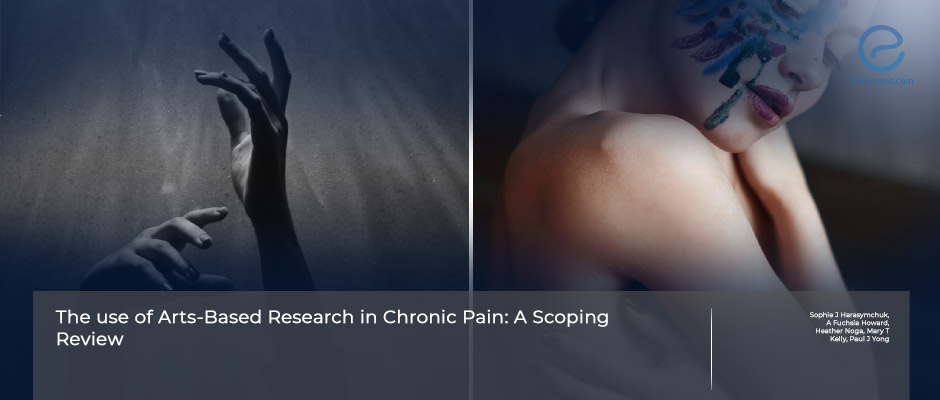Evaluating chronic pain through art
Aug 6, 2024
A review of the arts-based research in chronic pain patients revealed beneficial results
Key Points
Highlight
- Arts-based research methods effectively enhance understanding and communication with chronic pain patients.
Importance
- Bridging the gap between clinical medicine and arts-based methods is crucial for comprehensive chronic pain management.
What's done here
- This is a scoping review that assessed the application of arts-based research in chronic pain studies.
- It identified the potential for arts-based methods to capture complex pain experiences and enhance patient-provider communication.
Key results
- Arts-based research methods, such as drawing and painting, effectively captured the complex and nuanced experiences of chronic pain.
- Participants reported therapeutic benefits, including improved self-expression and emotional relief, from engaging in arts-based research.
- Visual arts to understand chronic pain's impact on self-identity and emotional states were used by the majority.
- A lack of standardized methods for analyzing art data was noted highlighting the need for systematic approaches.
- Arts-based research was found to complement traditional methods, offering deeper insights into pain experiences and patient-provider communication.
Strength and Limitations
- Strengths were the application of a specific definition of chronic non-cancer pain and the inclusion of a diverse international range of articles.
- Limitations were the restriction to English-language publications and peer-reviewed sources, the exclusion of patient partners from the review team due to lack of funding, and no assessment of cultural differences in pain and healthcare systems.
Lay Summary
Chronic non-cancer pain, affecting up to 31% of the global population, is a complex condition defined by persistent or recurring pain lasting over three months. Despite advancements in understanding chronic pain as a multifaceted interaction of biological, psychological, and social factors, clinical practice often remains narrowly focused on the physiological aspects. In light of these challenges, arts-based research has emerged as a novel approach to capture the complex experiences of individuals living with chronic pain, offering qualitative insights that traditional methods may overlook. Harasymchuk et al. from Canada conducted a scoping review aiming to map the extent and nature of arts-based research in chronic non-cancer pain, exploring its potential to enhance understanding and inform future interventions. The results of the study were published in the May 2024 issue of the Canadian Journal of Pain.
The review process included identifying research questions, selecting articles from four databases, data extraction, and summarizing results. From 1661 citations, 14 articles met the criteria, with nearly half conducted in the UK. Sample sizes varied widely, from a single case study to groups of up to 54 participants, primarily women aged 16 to 79 years. Various arts-based modalities, including drawing, painting, body mapping, and photovoice, were employed to explore the lived experiences of individuals with chronic pain, offering insights that traditional methods could not capture. The authors state that these methods helped patients express their pain more fully, revealing subtleties and layers of experience.
It was found that more than half of the articles used visual arts to understand chronic pain's impact on self-identity and emotional states. Two articles reported multiphased designs to create health interventions, such as an e-book for parents of children with chronic pain and a series of art workshops to reframe pain perceptions. Additionally, nine articles reported the therapeutic effects of arts-based research, noting that creating art helped manage the emotional aspects of chronic pain and provided a sense of community.
The authors state that arts-based research methods produce therapeutic benefits, constructing a collective space for participants to share experiences. They emphasize the importance of developing systematic methods for analyzing artwork and suggest further research into the therapeutic elements of arts-based methods. The authors conclude by saying that arts-based methods enhance patient communication. Future research should focus on the complexity of chronic pain conveyed through arts-based understandings and consider pain a complex social construct.
Research Source: https://pubmed.ncbi.nlm.nih.gov/38915305/
chronic pain arts arts-based research

